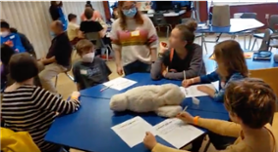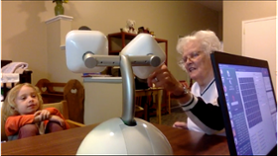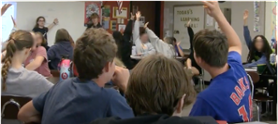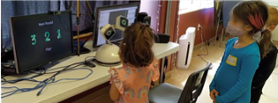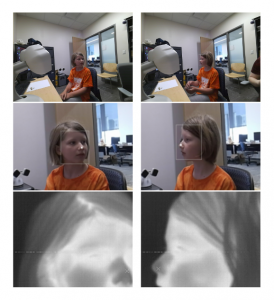Haru and other social robots have the capacity to act as a peer and mediator of activities that bring people closer together. Through multiple projects, we explore the ways Haru can act as a bridge across continents and generations, helping children build their their interpersonal social skills, their global citizenship skills and their awareness of and sensitivity to people who may be different from them in age, cultural background, and daily experiences.
In the first project, we utilize Haru as a mediator between classrooms in different regions of the US and countries around the world. Through remote communication, children can engage with Haru’s activities and share their everyday practices and experiences with another classroom, to inspire multicultural understanding and a feeling of belonging to a larger international community. While children connect with each other virtually, Haru supports their communication and sharing through its embodied presence in both environments. Haru enables both synchronous interaction, and asynchronous communication between children in geographically separated classrooms. We work with Honda Research Institute and other collaborators in Japan, Australia, Belgium, and Greece, connected through the Socially Interactive Robots Consortium (SIRC), to deploy this system internationally. In the US, we partner with diverse local rural and urban schools, such as Batchelor Middle School and Edgewood Junior High School, to develop and evaluate design concepts for educational robots that can support student learning and emotional growth. Our future plans are to expand our network of participating classrooms more broadly in the US, and in other countries around the world, including Bosnia, Turkey, and Morocco, among others.


